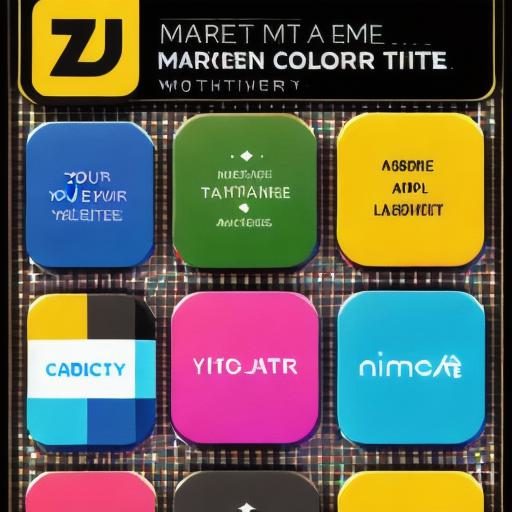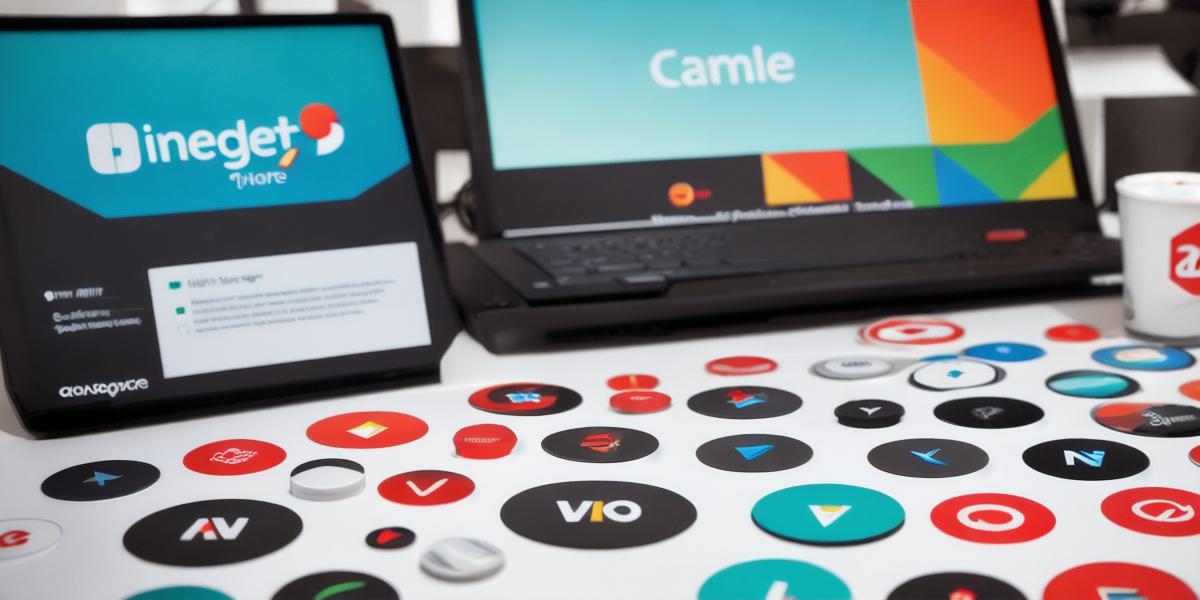Introduction:
The success of a game development company often hinges on its ability to create an eye-catching logo that can capture the attention of potential players and stakeholders. A well-designed logo not only helps establish a strong brand identity but also plays a crucial role in creating a positive first impression. In this article, we will discuss some tips and strategies for designing effective logos for game development companies, taking into consideration the latest design trends and best practices.
- Understand Your Target Audience:
To create an eye-catching logo that resonates with your target audience, you need to understand their preferences and behavior. Conduct market research and gather insights about the demographics of your target audience, including their age, gender, interests, and gaming preferences. This information will help you tailor your logo design to meet their needs and expectations. For example, if your target audience is primarily young adults who enjoy action-adventure games, your logo design should incorporate bold colors and energetic typography that appeals to this demographic. On the other hand, if your target audience is more mature and sophisticated, your logo design should be more understated and refined. - Define Your Brand Identity:
Your logo should reflect your brand identity and communicate your company’s values, mission, and personality. Develop a clear brand message that defines what sets your company apart from its competitors and resonates with your target audience. This will help you create a logo that is not only visually appealing but also meaningful and memorable. For example, if your game development company focuses on creating immersive and realistic gaming experiences, your logo design should incorporate elements of nature or fantasy that convey this sense of realism and wonder. - Choose the Right Color Scheme:
Colors play a significant role in branding and can evoke different emotions and associations. When designing a logo for a game development company, it’s important to choose colors that are relevant to the theme and genre of your games. For example, bright and bold colors like red, yellow, and green can convey energy and excitement, while cooler colors like blue and purple can evoke a sense of calmness and sophistication. You should also consider the cultural and psychological associations of different colors in your target audience’s region or country. - Consider Typography:
Typography is an essential element of logo design that can add personality and character to your brand. Choose typography that is legible and easy to read, but also unique and memorable. Experiment with different font styles, weights, and sizes to find the perfect balance between formality and playfulness. You should also consider the cultural and psychological associations of different fonts in your target audience’s region or country. - Incorporate Game Elements:
To create a logo that stands out and appeals to gamers, incorporate game elements into your design. This can include symbols like dice, controllers, or game icons, as well as references to popular games or genres. However, be careful not to overdo it or risk looking too gimmicky. You should also consider the cultural and psychological associations of different game elements in your target audience’s region or country.
- Keep It Simple:
A simple and clean logo design is often the most effective and memorable. Avoid cluttering your logo with too many elements or excessive text. Instead, focus on creating a minimalist design that captures the essence of your brand in a single, powerful image. Your logo should be easily recognizable and scalable across different mediums, such as business cards, websites, and social media platforms. - Test Your Design:
Before finalizing your logo design, test it with a sample audience to get feedback and make necessary adjustments. Conduct surveys, focus groups, or online polls to gather insights about how your logo is perceived by different people. Use this information to refine your design and ensure that it meets the needs and expectations of your target audience. You should also test your logo design in different color schemes and sizes to see how it looks in various contexts. - Optimize for SEO:
To increase the visibility of your logo in search engines, optimize it for SEO. This includes using relevant keywords in your logo file name and alt text, as well as including a link to your website in your logo design. By optimizing your logo for SEO, you can improve your online presence and attract more traffic to your website. You should also consider the cultural and psychological associations of different keywords in your target audience’s region or country. - Follow Design Trends:
Stay up-to-date with the latest design trends and incorporate them into your logo design if they align with your brand identity and personality. For example, if your target audience is younger and more tech-savvy, consider incorporating modern design elements like minimalism, geometric shapes, or flat colors. On the other hand, if your target audience is older and more traditional, stick to classic design elements like serif typography, warm colors, or intricate details. - Get Feedback:
Finally, get feedback from a diverse group of people to ensure that your logo design is universally appealing and effective. This can include friends, family, colleagues, or even potential customers who represent your target audience. Take their feedback into consideration and make any necessary adjustments to your design before finalizing it.
Conclusion:
Designing an eye-catching logo for a game development company requires careful consideration of your target audience, brand identity, color scheme, typography, game elements, simplicity, SEO optimization, design trends, and feedback. By following these tips and strategies, you can create a logo that not only captures the attention of potential players and stakeholders but also reflects your company’s values, mission, and personality.
